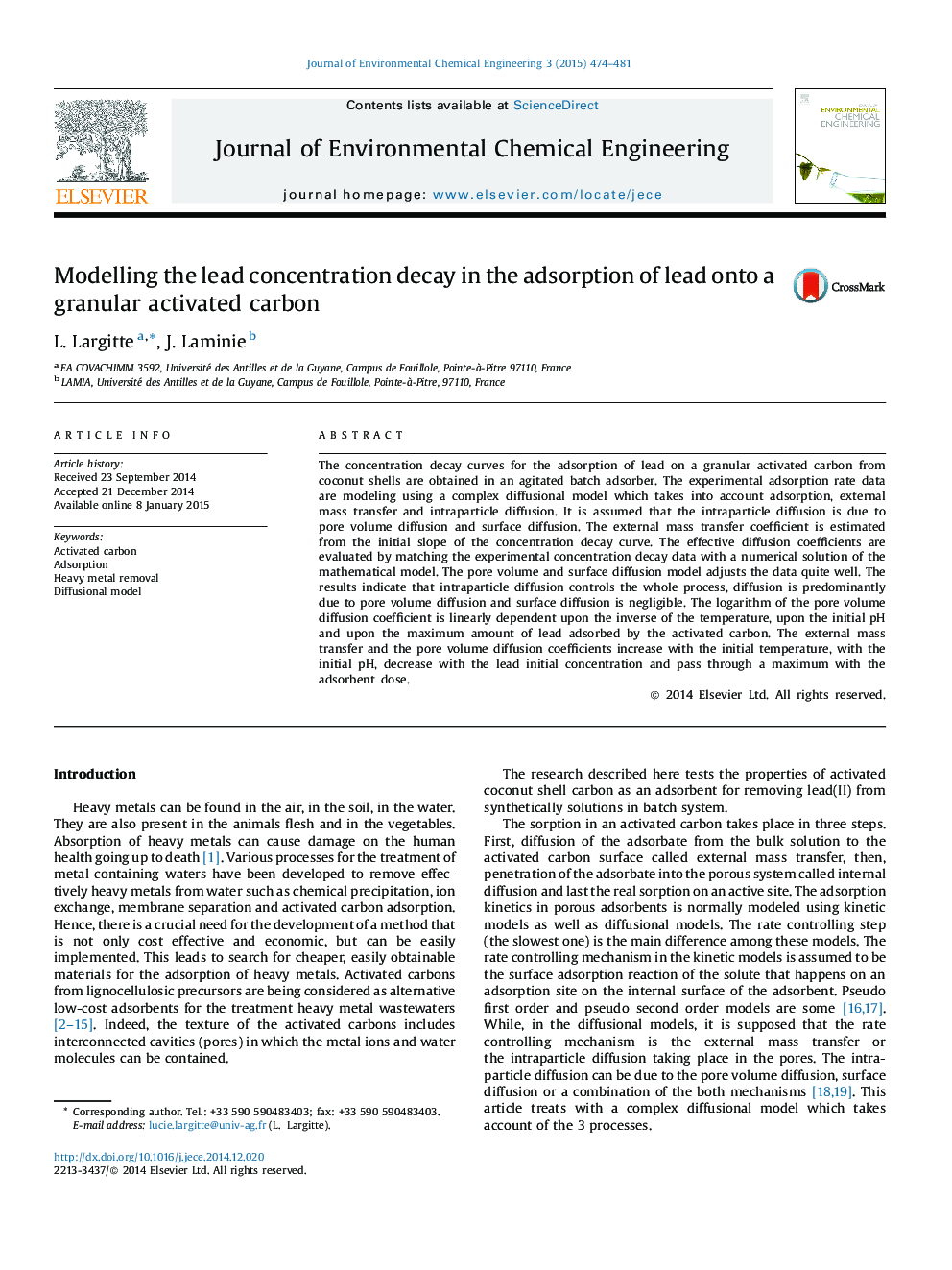| کد مقاله | کد نشریه | سال انتشار | مقاله انگلیسی | نسخه تمام متن |
|---|---|---|---|---|
| 222432 | 464275 | 2015 | 8 صفحه PDF | دانلود رایگان |
• A complex diffusional model is used to describe the heavy metal removal by an AC.
• The model takes account adsorption, external mass transfer, intraparticle diffusion.
• The pore volume diffusion coefficient is dependent upon the temperature.
• The pore volume diffusion coefficient is dependent upon the initial pH.
• The pore volume diffusion coefficient is dependent upon the maximum amount of lead.
The concentration decay curves for the adsorption of lead on a granular activated carbon from coconut shells are obtained in an agitated batch adsorber. The experimental adsorption rate data are modeling using a complex diffusional model which takes into account adsorption, external mass transfer and intraparticle diffusion. It is assumed that the intraparticle diffusion is due to pore volume diffusion and surface diffusion. The external mass transfer coefficient is estimated from the initial slope of the concentration decay curve. The effective diffusion coefficients are evaluated by matching the experimental concentration decay data with a numerical solution of the mathematical model. The pore volume and surface diffusion model adjusts the data quite well. The results indicate that intraparticle diffusion controls the whole process, diffusion is predominantly due to pore volume diffusion and surface diffusion is negligible. The logarithm of the pore volume diffusion coefficient is linearly dependent upon the inverse of the temperature, upon the initial pH and upon the maximum amount of lead adsorbed by the activated carbon. The external mass transfer and the pore volume diffusion coefficients increase with the initial temperature, with the initial pH, decrease with the lead initial concentration and pass through a maximum with the adsorbent dose.
J = f(Ds, Dep) at T = 30 °C, pHi 5, CA0 = 150 mg L−1, D = 1 g L−1.J = f(Ds, Dep) at T = 30 °C, pHi 5, CA0 = 120 mg L−1, D = 1 g L−1.Figure optionsDownload as PowerPoint slide
Journal: Journal of Environmental Chemical Engineering - Volume 3, Issue 1, March 2015, Pages 474–481
